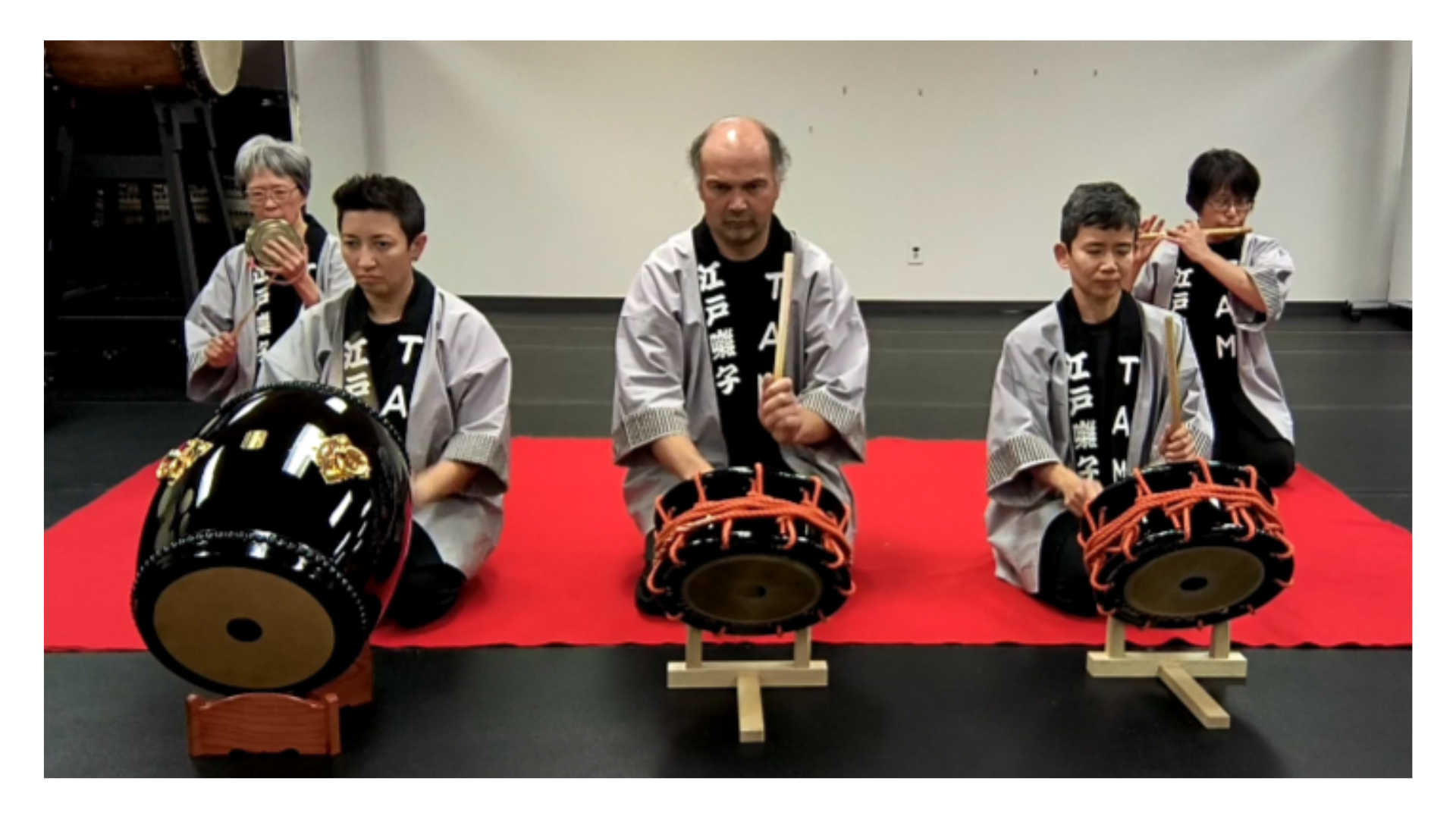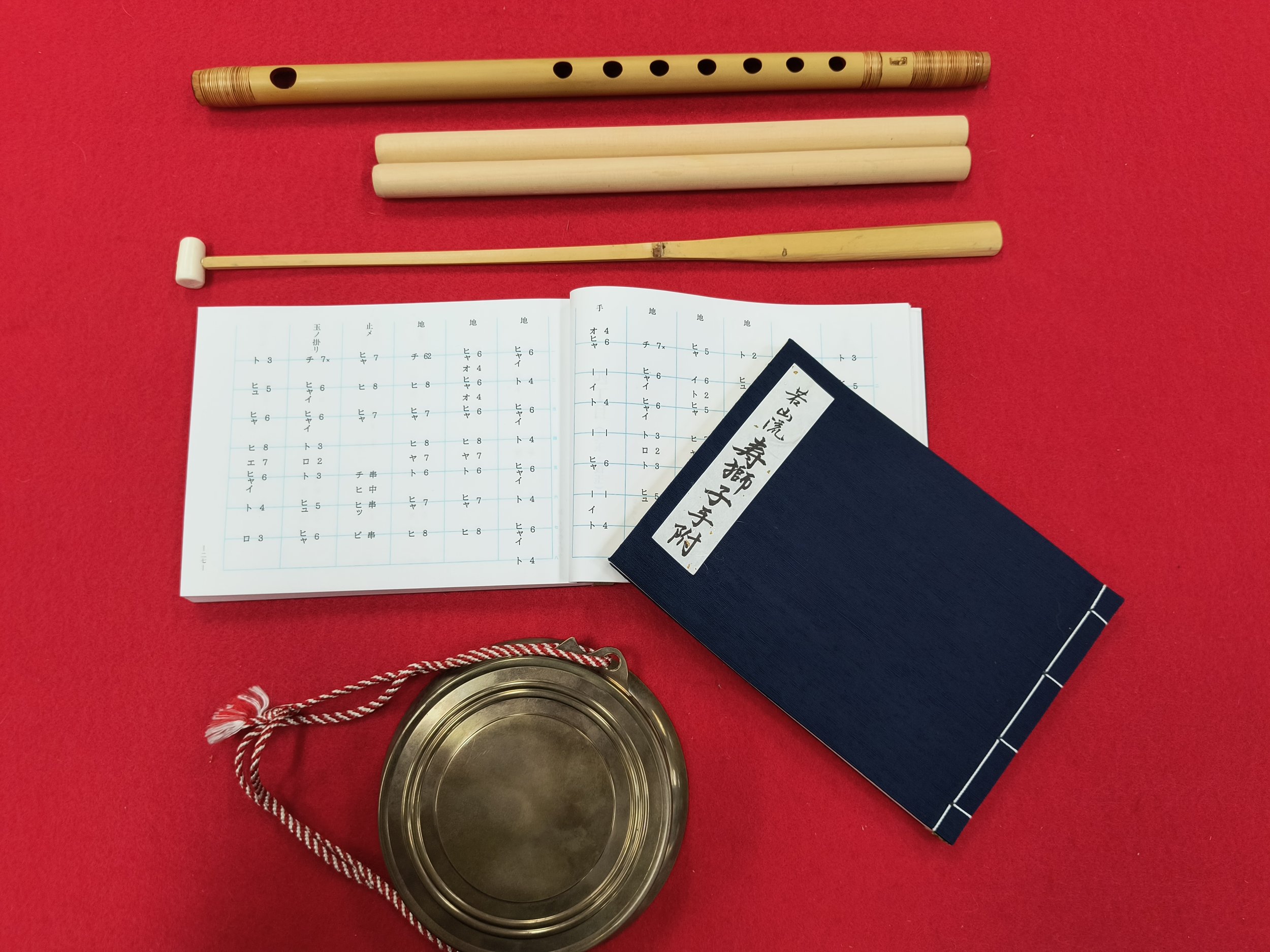TAM Edo Bayashi Ensemble
TAM (TaikoArts Midwest)
Mission and goals
Our mission is to dedicate ourselves to studying traditional Japanese music which originated in the Edo period (1603-1867), share the cultural experience with the audience, and raise their awareness and understanding of cultural diversity. To accomplish that goal, we perform the music in the traditional form, and introduce its history and traditional Japanese musical instruments to our audience. We are one of the few ensembles in North America equipped with a complete set of the traditional instruments for Edo Bayashi and the only ensemble that is studying the advanced version of the music. We will further study the music to serve the community as performers and to communicate the meaning of learning cultural diversity.
Our history
Founded by Iris Shiraishi as a subgroup of Mu Daiko in 2013, TAM Edo Bayashi Ensemble has been studying and performing Edo Bayashi (festival music of old Tokyo), Edo Kotobuki Jishi (celebratory lion dance of old Tokyo) and Ryomen Odori (double-masked dance). Those are Japanese traditional music that began during the Edo period and has been typically performed at Shinto shrines.
Our group started studying the music under the instruction of Kenny Endo of the Taiko Center of the Pacific, who is the first non-Japanese to receive the high honor of a natori, which is a license given by a certain prestigious school to perform and teach Japanese traditional music. We have since been studying under the guidance of master artist Kyosuke Suzuki of the Wakayama Shachu, which is a professional Japanese traditional music troupe in Tokyo. Wakayama Shachu is one of four troupes designated by the Agency for Cultural Affairs, Government of Japan, as a significant intangible folk cultural asset. We perform this music in the same form as the Wakayama Shachu is preserving it. Another critical musician who has impacted us is Eien Hunter-Ishikawa. Eien is the founder of the Portland Shishimai Kai and has dedicated himself to sharing this culturally rich music with musicians in North America.
The year 2018 was an unforgettable year for our group. Suzuki-sensei performed in Minnesota with us, and TAM successfully fundraised $12,000 to purchase the Edo Bayashi drum set and other Edobayashi-related items from Japan.
Edo Matsuri Bayashi or Edo Bayashi
Matsuri means festival in Japanese and hayashi (or bayashi, ohayashi) is translated as ensemble that plays traditional Japanese musical instruments. The Ensemble consists of five players: two shime daiko (small drums), one odaiko (medium sized taiko), one shinobue (bamboo flute), and one atarigane (hand-held small gong).
Edo Kotobuki Jishi
Kotobuki means felicitations. Shishi (or jishi) is typically translated as ‘lion’, though the shishi is an imaginary creature. Edo Kotobuki Jishi is a traditional Japanese lion dance that is being preserved by the Wakayama Shachu. It is said that the shishi brings you good luck, so the Japanese lion dance is often performed on celebratory occasions, such as new year celebration and weddings. This lion dance is performed by one dancer and an ohayashi consisting of three players: a combination of shimedaiko and okedo (small drum made with a barrel), one shinobue, and one atarigane.
We are currently in the process of purchasing an authentic shishigashira (lion head). This shishigashira is hand-carved by a Japanese craftsman and is a handmade piece of art. It is scheduled to be delivered to TAM in September 2024.
Ryomen Odori
Ryomen means double-masked, and odori is translated as dance. In this comical dance, the dancer with two masks, a woman on the front and a man on the back, dances playing those two roles. This is performed by one dancer and an ohayashi consisting of three players: a combination of shimedaiko and okedo, one shinobue, and one atarigane.
…………………………………………….
Members
Michiko Todokoro Buchanan
Jeff Ellsworth
Junko Kumamoto
Chiaki O’Brien
Iris Shiraishi
Susan Tanabe
Arlene Teraoka
Hiroshi Yoshino







